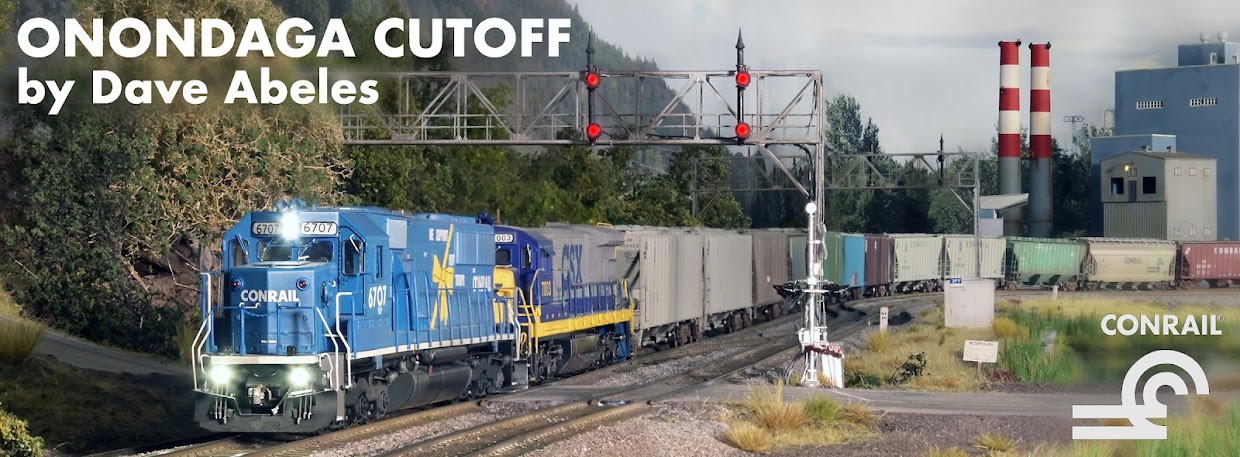Building a railroad like this in my home means that much of what I am doing, I am learning by myself for the first time. Therefore, a good part of the fine points of construction, operation, and electronics are learned trial-by-error...figuring out problems when the happen, and hoping I don't destroy electrical components!
So far, I did toast a decoder (due to a steel tool fouling the track, which tripped the breaker, but due to the length of time that passed before I realized it, the decoder shorted out anyway). I have also had to learn the hard way with my breaker settings and power district design.
My NCE EB-1 breakers were installed as per the directions that come with the units. While the booster itself has an internal breaker, I wanted to add a layer of protection before causing that breaker to trip, to ensure that the booster would last. The additional layer includes the bank of EB-1 external breakers with a factory-set limit of 2.5 amps per breaker. While fine for a small layout or for a large layout with no grades and small trains, this limit quickly began to get in the way of my operations. Thankfully, NCE predicted this, and allows the user to adjust the trip limit of each breaker using jumpers provided with the kit. I bumped mine up in steps, per the instructions, and stopped with each breaker set to 5 amps, since if I went higher the breaker in the 5-amp booster itself would trip before the EB-1. All worked well with this idea until last night.
I was running two large trains, in different directions, when suddenly the breaker protecting the upper level tripped again. The issue here is that this load is going to be standard for me: two trains with more than 30 cars, 5 Athearn units total, moving upgrade on separate districts. However, I noticed the breaker only tripped when both trains were pulling uphill AND then one crossed the insulated gaps onto the same power district as the other. On separate breakers, 3 units and a big train is fine, even upgrade.
This leaves one solution: time for another power district.
Fortunately, I purchased a total of six EB-1 breakers, one of which is reserved for the short line. Therefore I have two remaining breakers. My plan now is to add another insulated gap just east of CP280, and a new power district, allowing trains in different directions to pull over the top of the grade on DIFFERENT breakers, instead of the same breaker. It is my belief that this will solve the issues of overdraw on the district. But...time will tell.
Stay tuned!

No comments:
Post a Comment